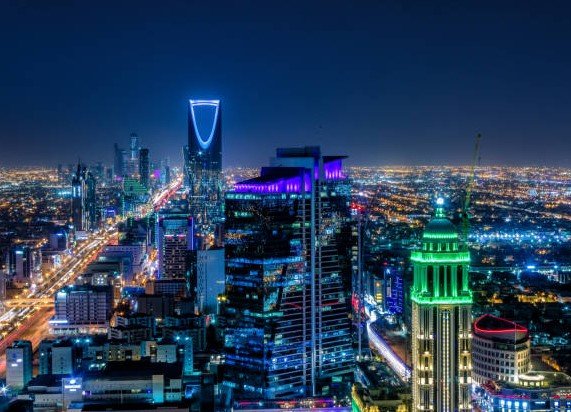Saudi Arabia’s housing ministry has rolled out new land tax zones in Riyadh to tackle undeveloped land and stabilize the real estate market. Announced on August 27, 2025, by Minister Majid Al-Hogail, this move aims to boost property supply and support balanced urban growth under Crown Prince Mohammed bin Salman’s guidance.
The initiative targets white lands, which are vacant urban plots, by imposing annual fees based on location and value. This step comes as Riyadh’s real estate sector sees rapid changes, including rising villa prices and upcoming foreign ownership rules set for 2026.
Details of the Announcement
Minister Al-Hogail highlighted how the new program lets landowners and developers seize market chances while aligning with national goals. The focus is on increasing housing availability and curbing speculation in Riyadh, the kingdom’s bustling capital.
This follows a review of market trends, where officials noted high demand for homes amid population growth. Recent data shows Riyadh’s villa prices jumped 15 percent in the second quarter of 2025, driven by strong buyer interest in master-planned communities.
The ministry plans to form a technical committee of licensed appraisers to evaluate land values and set development schedules. Committee members serve three-year terms, with options for renewal, ensuring fair assessments.

Officials will review land and housing supply each year, along with prices and market practices. This allows adjustments to the program, such as expanding or pausing fees, to match urban needs.
How the White Land Fee System Works
The system divides Riyadh into priority zones with tiered annual fees based on land value. Only plots within official urban boundaries qualify, starting from a minimum size of 5,000 square meters per owner.
Fees apply to all undeveloped land uses, encouraging owners to build or sell. Lands outside priority areas skip fees but count toward an owner’s total holdings in the city.
Here’s a breakdown of the tax tiers:
| Zone | Annual Fee Percentage |
|---|---|
| Priority Zone 1 | 10% of land value |
| Priority Zone 2 | 7.5% of land value |
| Priority Zone 3 | 5% of land value |
| Priority Zone 4 | 2.5% of land value |
| Outside priority areas | Exempt, but tracked |
This structure pushes high-value zones toward quick development, while lower tiers give flexibility in growing areas.
Owners must register their properties through official channels, with penalties for non-compliance. The program builds on earlier regulations approved by the minister, refining how fees are calculated and enforced.
Impact on Riyadh’s Real Estate Market
Experts say the taxes will unlock more land for housing, easing shortages in a market projected to grow from 72.11 billion dollars in 2024 to 132.65 billion dollars by 2033, at a 7 percent annual rate.
In the first half of 2025, nationwide housing deals hit 33 billion dollars, with Riyadh leading in transactions. The new zones could lower prices by increasing supply, benefiting buyers and renters alike.
Developers welcome the change, as it reduces holding costs for unused land. One industry analyst noted that similar taxes in other cities have boosted construction by 20 percent within two years.
However, some landowners worry about added financial pressure. Small holders might sell off plots, leading to more affordable options for first-time buyers.
The move ties into broader trends, like the upcoming foreign ownership law starting January 2026. This could draw international investors to Riyadh and Jeddah, further energizing the market.
Alignment with Vision 2030 Goals
Vision 2030, Saudi Arabia’s blueprint for economic diversification, emphasizes sustainable urban growth. The land tax supports this by promoting efficient land use and reducing reliance on oil revenues.
By balancing the real estate sector, the program aims to create vibrant communities with better access to homes and services. It also fights monopolistic practices, ensuring fair competition among developers.
Key benefits include:
- Increased housing stock to meet demand from a growing population.
- Lower risks of market bubbles through steady supply.
- Support for mega-projects that blend residential and commercial spaces.
Officials expect the taxes to generate revenue for infrastructure, like new roads and utilities in Riyadh’s expanding suburbs.
Expert Views and Future Outlook
Real estate professionals praise the initiative for its timely approach. A report from a leading consultancy firm predicts a 10 percent rise in new developments in Riyadh by 2026, thanks to these incentives.
Challenges remain, such as ensuring transparent valuations to avoid disputes. The ministry plans public awareness campaigns to help owners navigate the system.
Looking ahead, similar zones might expand to other cities like Jeddah and Madinah, where real estate values surged 49 percent in the first half of 2025.
As Saudi Arabia opens its property market to foreigners next year, these taxes could shape investment patterns, making Riyadh a hotspot for global buyers.
What do you think about these new land tax zones? Share your thoughts in the comments below and spread the word by sharing this article with friends interested in Saudi real estate trends.
